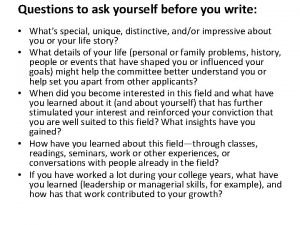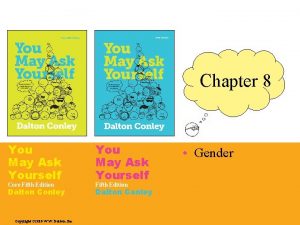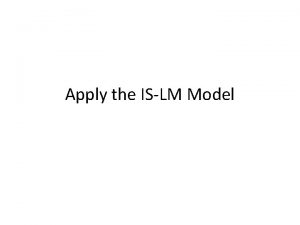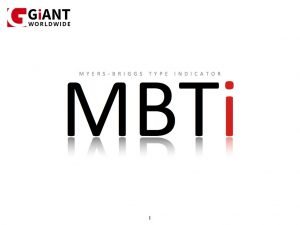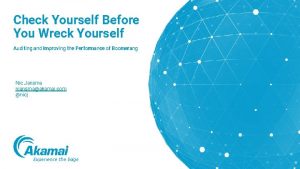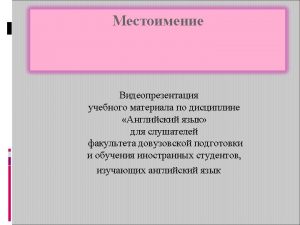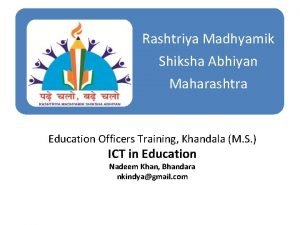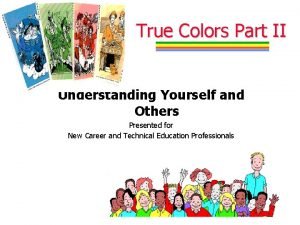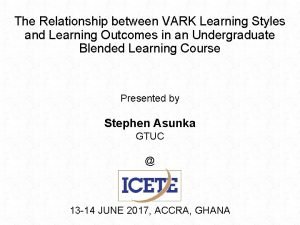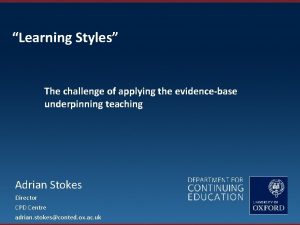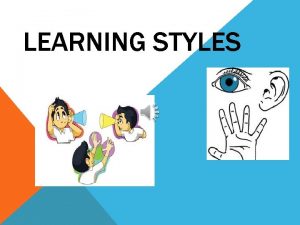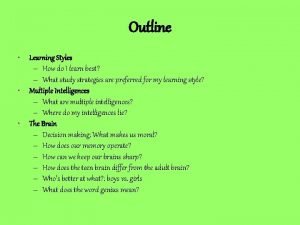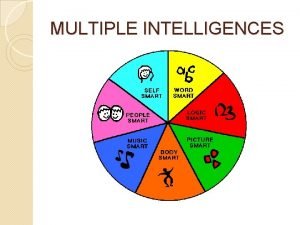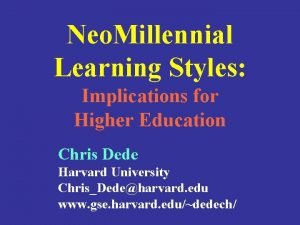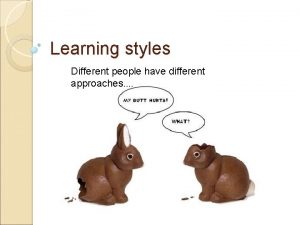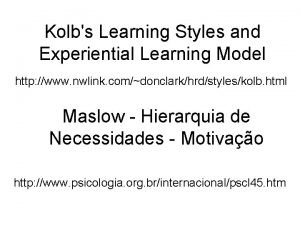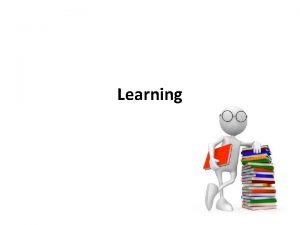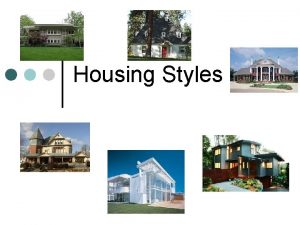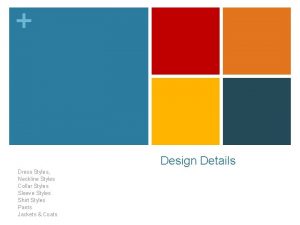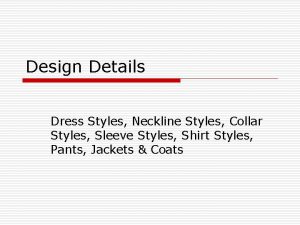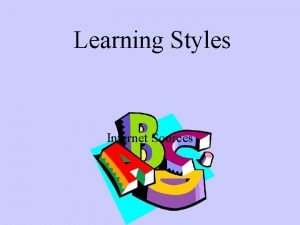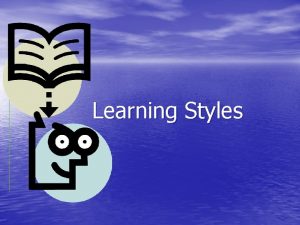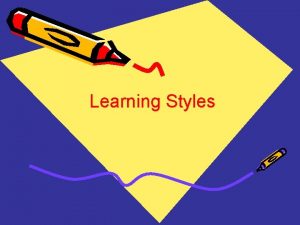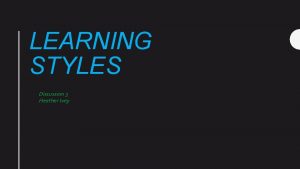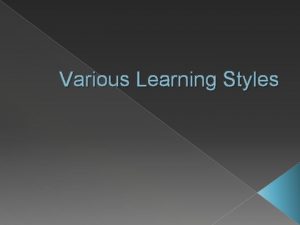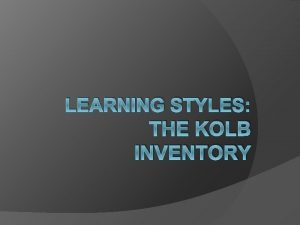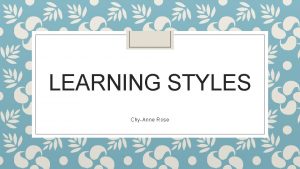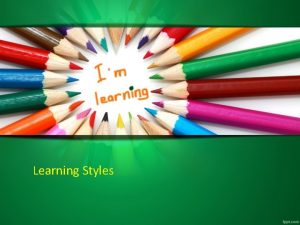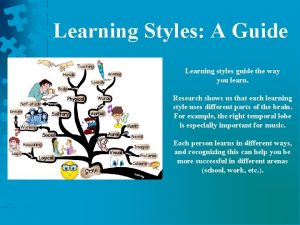LEARNING STYLES 1 Ask yourself what comes to























- Slides: 23

LEARNING STYLES 1

Ask yourself what comes to mind when you hear the word „dog” Some people see a picture of an animal … Others hear a bark … While others remember feeling of the dog’s … 2

DRAW WHAT YOU SEE 3

DRAW WHAT YOU HEAR 4

DRAW ALONG 5

We communicate and process the information differently…This is what this workshop is all about… 6

Did you know that students retain: 10% of what they read 20% of what they hear 30% of what they see 50% of what they see and hear 70% of what they say 90% of what they say and do!! 7

Multi-sensory approaches work well because of the way our brain is organized. When we learn, information takes one path into our brain when we use our eyes, another when we use our ears, and yet another when we use our hands. By using more than one sense, we bombard our brain with the new information in multiple ways. Thus, we learn better!! 8

Three Major Learning Styles By Glover (August, 2004) Visual learners: seeing words, pictures, directions Auditory Learners: listening to tapes, conversation, words with music Kinesthetic & Tactile Learners: getting fully involved in role plays and field trips 9

WORKING OUT LEARNING STYLES Watch where the eyes move: §Up = Visual §Side to side = Auditory §Down =Kinesthetic Listen to the words we use: §Visual: ‘Look at me’, ‘I see what you mean’, ‘I can’t picture it’ §Auditory: ‘Listen to me’, ‘I hear what you are saying’, ‘Sounds good’ §Kinesthetic: ‘Come to me’, ‘I feel for you’ Ask directions §Visual: uses maps, draws maps §Auditory: just tells you §Kinesthetic: takes you there Seating in cinema §Visual: middle §Auditory: sides §Kinesthetic: back 10

USE LEARNING STYLES INVENTORY http: //www. businessballs. com/vaklearningstylestest. htm http: //www. solida. net/stars/vak/VAK-tests. html 11

1. Visual learners: Have a keen awareness of aesthetics Pay close attention to body language Can make movies in their minds of information they are reading Prefer face-to -face meetings Easily understand information presented in charts, pictures, or diagrams Good with visual symbols Can easily recall printed information Are distracted by untidiness or movement Comfortable with books and graphics May forget names, but remember faces 12

A mind map of a visual learner 13

2. Auditory Learners Learn best by hearing Have strong oral communication skills Tend to be talkers Forget faces, but remember names and what you talked about Can hear tones, rhythms, and notes of music Accurately remember details from conversations Prefer verbal directions Prefer the telephone Enjoy rapping! Become distracted by sounds or noises Sound out words 14

3. Kinesthetic or Tactile Learners Are well coordinated Learn best by using their hands Learn best by doing Able to disassemble and reassemble things Were labeled as hyperactive Ignore directions and figure it out as they go along Jump right in and try activities Prefer action stories and may not be keen readers Write words down to see if they feel right Enjoy role play! Gesture and use expressive movements 15

What does this mean for teachers? For students? ? What types of activities should teachers try to enhance student learning? What tips can teachers give students? 16

Glover (August, 2004) provides suggestions for the 3 types of learners that follow: 17

(a) Instructional Strategies for Visual Learners Keep the study environment clutter free Highlight and write as you study. Use different colors to select and organize Always write down what you need to remember Make recall cues as visual as possible with capital letters, colors, and illustrations Use charts and pictures to study Make class notes visual with drawings, spacing, symbols, etc. Recall information by visualizing text pages, notes, or study cards. When solving problems, draw or illustrate the problem and solution 18

(b) Instructional Strategies Auditory Learners Study in groups or with friends Recite aloud as you study Attend all class lectures Tape record lectures in addition to taking notes and play them in your car Talk yourself through the steps of a problem Talk to yourself – describe diagrams or practice answering test questions out loud Recite study cards into a tape recorder and play it back Recall information during exams by hearing yourself recite in your head 19

(c) Instructional Strategies for Kinesthetic Learners Use as many of your senses as possible when you study Move around when you study – put study cards on the floor and recite them as you move around the room Study in small frequent chunks Use a timer to set study periods. Start with short times and work up. Take a break when the timer sounds Study with another kinesthetic person When solving problems, move around and manipulate items to represent parts of the problem When taking tests try to feel how you stored information by remembering what you physically did as you studied 20

COMENIUS PROJECT TASKS Visual learners: • present data in charts, diagrams • take photographs for the articles • prepare multimedia presentations • work on the layout Auditory learners: • do interviews • braintsorm ideas for the articles • take part in discussions • use recordings (Audacity) Kinesthetic learners: • do experiments • take part in excursions, trips • take notes • participate in team activities 21

References n n n Glover, D. (August 2004). Learning Styles : What Tutors Need to Know. Retrieved February 15, 2006, from http: //www. brescia. edu/students/sss/learning_styles. ppt CHRISTISON, M. A. Learning styles and strategies. In D. Nunan (Ed. ). Practical English Language Teaching. New York: Mc. Graw Hill, 2003. DUNN, R. , K DUNN AND G. E. PRICE. The learning style inventory. Lawrence, KS: Price Systems, 1975. KEEFE, J. W. Student learning styles: Diagnosing and prescribing programs. Reston, VA: National Association of Secondary School Principals, 1979. Villems, A. Learning Styles. Retrieved February 20, 2006, from http: //www. ceenet. org/workshops/lectures 2000/Anne_Villems/1 Yukhina, E. How Designers Think, Cognitive & Learning Styles. Retrieved February 16, 2006, from http: //www. arch. usyd. edu. au/~john/DESC 9099 Cognitive. Styles. ppt 22

Prepared by the Comenius team from Gimnazjum im. Polskich Olimpijczyków, Kraszewice, Poland November 2011 ‘This project has been funded with the support from the European Comission. This publication reflects the views only of the author, and the Comission cannot be held responsible for any use which may be made of the information contained therein’ 23
 What is your favourite food why
What is your favourite food why Ask tell ask feedback model
Ask tell ask feedback model Questions to ask yourself when writing an essay
Questions to ask yourself when writing an essay You may ask yourself chapter 8
You may ask yourself chapter 8 Ask yourself shorts
Ask yourself shorts Know yourself to lead yourself
Know yourself to lead yourself Check yourself before you wreck yourself origin
Check yourself before you wreck yourself origin Myself yourself himself herself
Myself yourself himself herself Ict in education images
Ict in education images First comes love, then comes marriage
First comes love, then comes marriage Cuadro comparativo de e-learning
Cuadro comparativo de e-learning True colors learning styles
True colors learning styles Define vark
Define vark Education planner learning style
Education planner learning style Objectives of learning styles
Objectives of learning styles Learning style outline
Learning style outline Extracurricular activities
Extracurricular activities 7 learning styles
7 learning styles Education styles
Education styles Objectives of learning styles
Objectives of learning styles 7 learning styles and vark similarities
7 learning styles and vark similarities Kolbs learning styles
Kolbs learning styles Driver communication style
Driver communication style Why is knowing your learning style important
Why is knowing your learning style important


